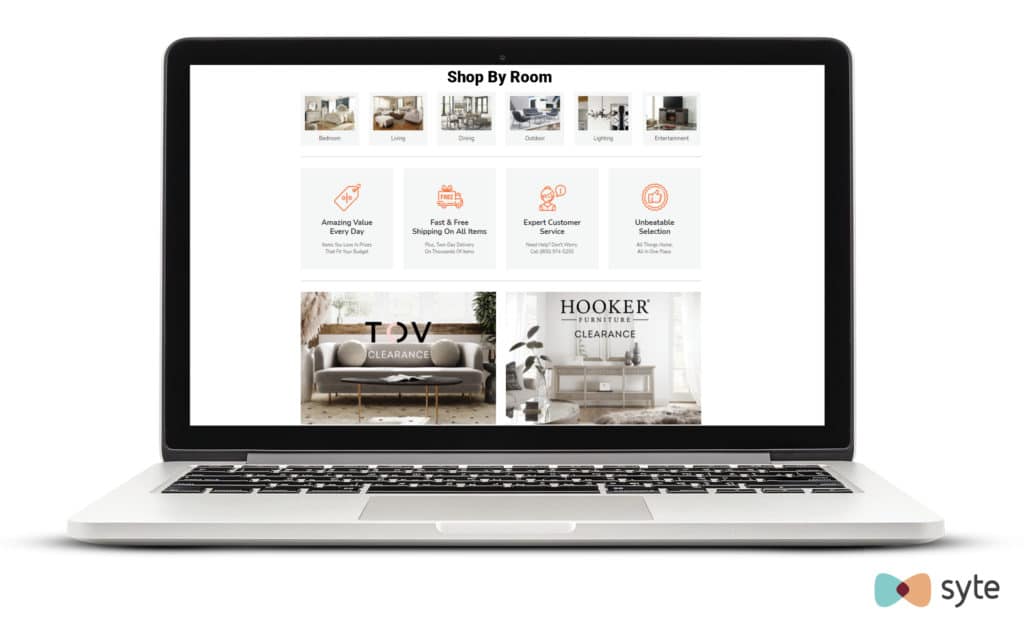Online merchandising is the strategic placement and order of products, collections, and promotions on your site to increase sales. Done right, it not only makes shoppers interested in exploring and purchasing your items but also ensures that they discover the right products at the right time. Online merchandising involves all aspects of your site, covering everything from product images and descriptions to user-generated content.
Why Does Online Merchandising Matter?
An effective online merchandising strategy not only sparks the interest of shoppers but also guides them from product search and discovery all the way to purchase. This is done through intentional product displays, interactive homepages, elaborate product detail pages, and a smooth check-out process, which all work together to increase conversions by to making product discovery intuitive and easy.
 Coleman Furniture’s homepage demonstrates online merchandising through the use of imagery and inspirational galleries.
Coleman Furniture’s homepage demonstrates online merchandising through the use of imagery and inspirational galleries.
Elements of Online Merchandising
To ensure a seamless and positive shopping experience, you can start by adjusting and improving the following eCommerce merchandising elements:
- Design – Make sure the look and feel of your website helps drive shoppers to purchase. Aesthetics aren’t only important for brick-and-mortar stores — it’s also critical for your online brand. A harmonious, structured, and fast website can instill confidence and excitement in your shoppers.
- Merchandising rules – Rank and present products so that the final layout leads to relevant results and successful conversions.
- Product assortment – This term refers to the variety of products sold and how they appear to site visitors. You can use ranking strategies to prioritize certain products over other due to availability, sales performance, and social proofs.
- Product tags – The way you label your items matters. When product tags are accurate, updated, and streamlined, they enhance on-site search and navigation so that only the most relevant items appear in results and recommendations. Product tags are also helpful in keeping track of your inventory.
- Shopping methods – Offer different ways for shoppers to navigate through your site and find products. Common shopping methods include using the search bar, selecting filters, and scrolling through product carousels.
Online Merchandising Best Practices
With so many options to choose from, customers today want to be engaged meaningfully so that they stay and make a purchase. Here are some tips you can apply to create a more compelling customer journey with smart merchandising:
- Showcase persona-based collections on your homepage – Feature your latest release, best sellers, seasonal items, and inspirational photo galleries.
- Optimize filters on product listings page – Allow shoppers to narrow down a wide selection of merchandise by selecting product attributes that represent the items they’re looking to find.
- Highlight promotions when it makes sense – Across your site, you can pair products with high-value discounts to introduce shoppers to more items or to push them down the funnel.
- Promote user-generated content together with standard product images to establish trust – Shoppers often look for social proof before deciding to complete the purchase, making it extremely beneficial to include customer reviews with photos or social media posts.
- Encourage shoppers to add more items to their shopping cart with personalized and highly relevant recommendations – You can make customers feel that their wants and needs are understood by showcasing items that are relevant to their real-time intent and unique preferences.
Want to read more about online merchandising best practices? Check this out.